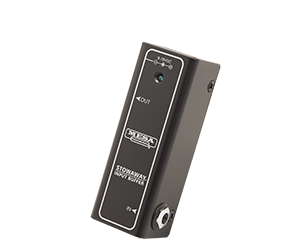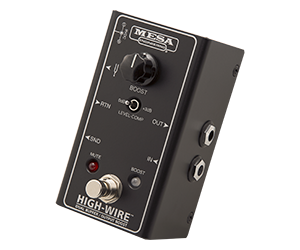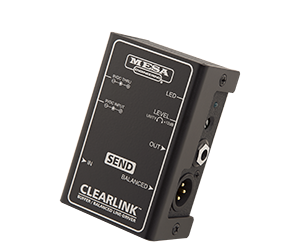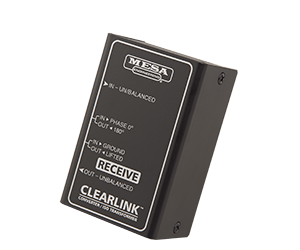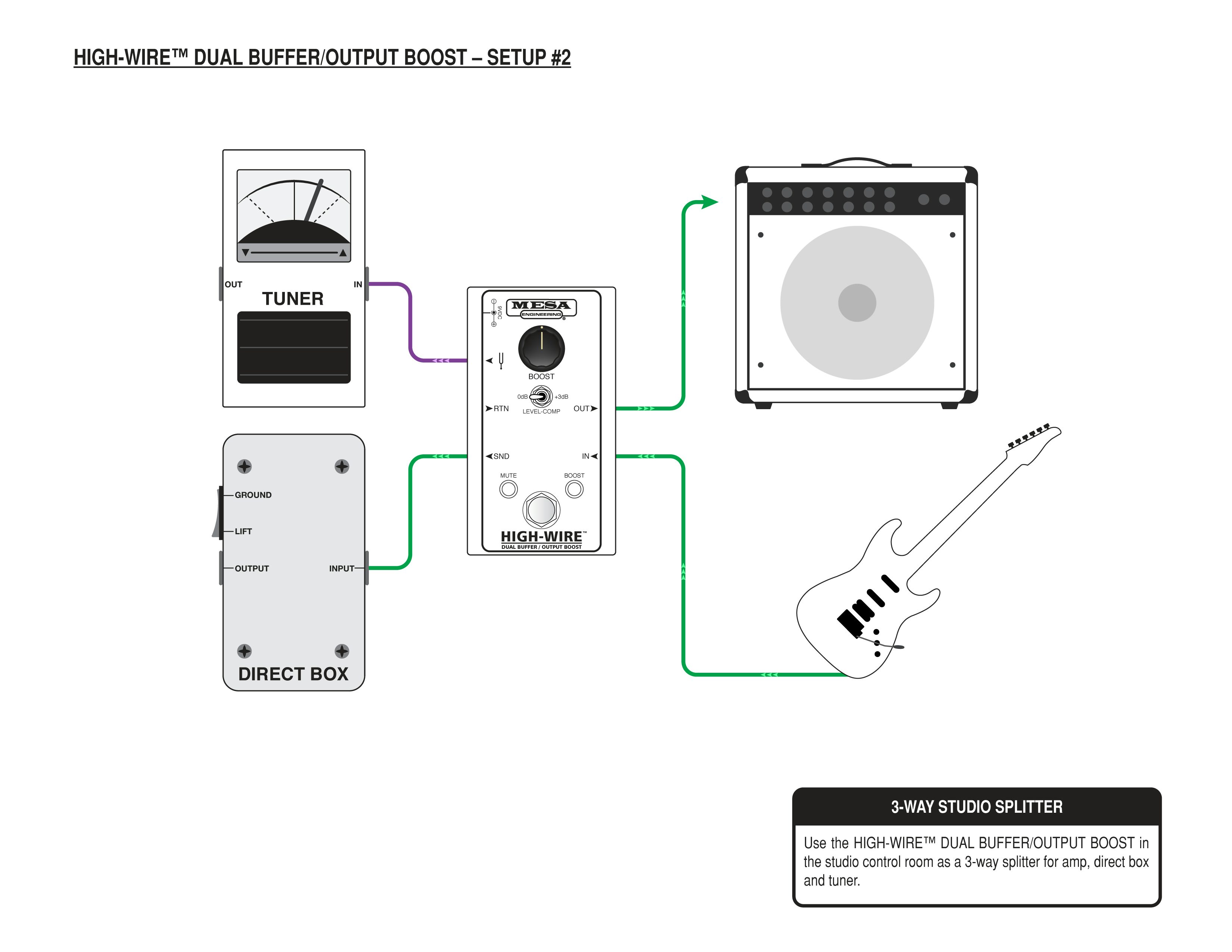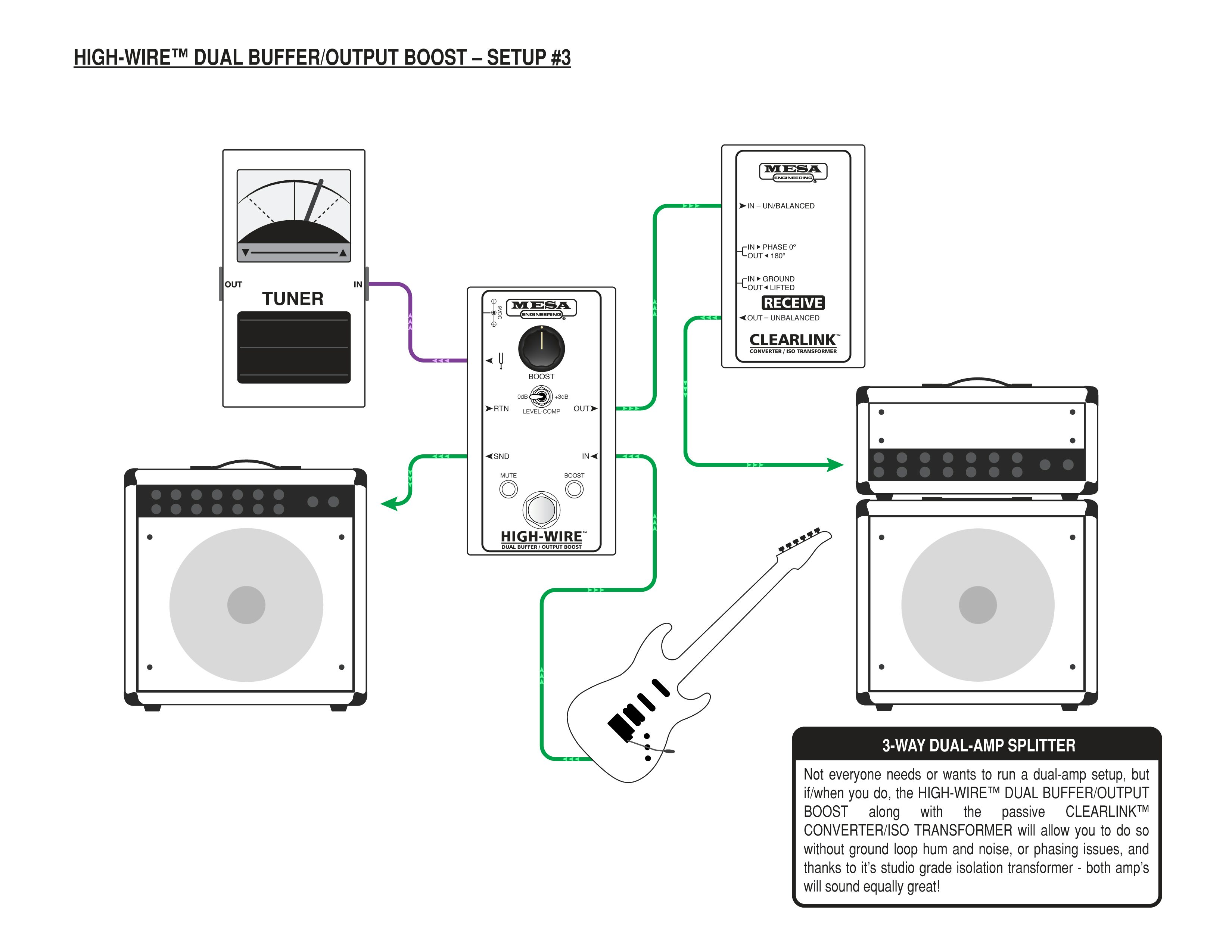Socialize With Us
Overview
The HIGH-WIRE™ is our Dual Buffer and Line Driver in a one-stop solution that addresses both Input and Output challenges in the same space saving chassis. Between Instrument and pedals, it provides a stable, consistent load for your guitar’s pickups, ensuring your signal arrives at the first pedal intact and full of Tone. From Pedal Board to the amplifier, it not only buffers the signal, ensuring optimum impedance loading and performance, but also allows for increased signal levels for extra long cable runs via the built-in Line Driver (Footswitchable Boost) feature. As with the Stowaway, all buffer circuitry is 100% discrete Class-A. The HIGH-WIRE also incorporates a fixed +3dB BOOST on a top mounted mini-toggle. The Footswitch is Dual Function and allows both the variable BOOST when hit once and a MUTE when held for a second. The HIGH-WIRE is the ultimate all-in-one Pedal Board signal loss remedy and will remove your tightrope Tone walk once and for all.
See FULL DETAILS for Specifications and FAQs. Setup Diagrams & Instructions Below.
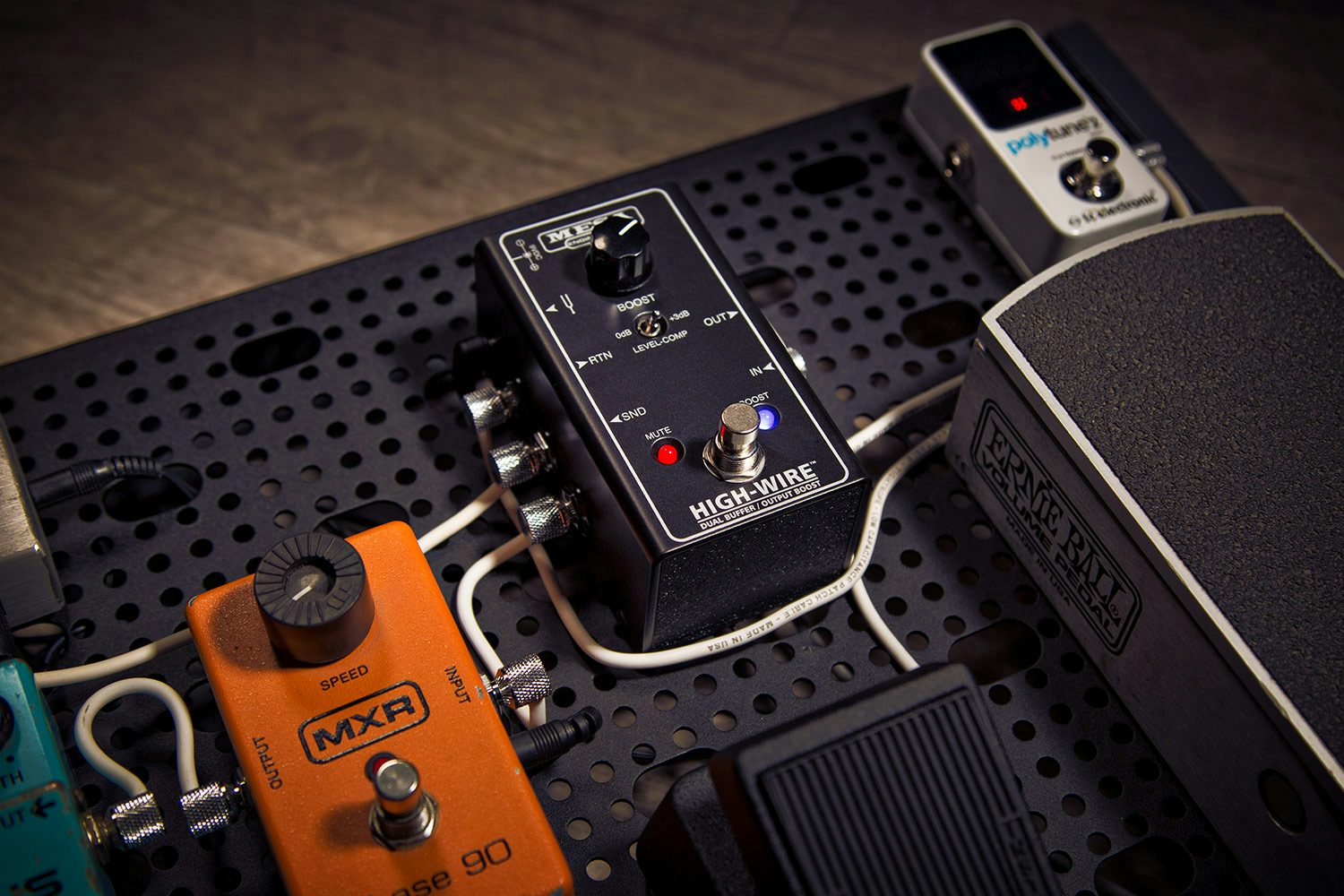
Setup Instructions
View Setup Instructions
Full Details
HIGH-WIRE™ FEATURES
- Made in Petaluma, California with the World’s Finest Materials
- 100% Discrete Class-A STOWAWAY™ Input Buffer Circuit
- Provides the tone & feel of plugging directly into a high-quality tube amp
- RFI Filtering minimizes radio-frequency interference and noise
- Segregated Send & Return Effects Loop provides guitar AND amp with a resolute load and source for the most consistent tone and feel possible
- Integrated CLEARLINK™ Output Line Driver with +3db Level Comp Switch – Capable of driving long ¼” cable runs directly to your amp’s input
- Tuner Output – Provides an “always on” buffered output separate from the main signal chain to feed tuner
- Dual Function Boost/Mute (Tune) Footswitch – Press on/off to activate Boost – Press and hold to activate Mute/Tune
- Variable, Footswitchable Boost Control from Unity up to +22db of Output Boost
- Boost On/Off Status LED
- Mute (Tune) On/Off Status LED
- 9-12VDC External Power Jack Input (power supply not included)
SPECIFICATIONS
- Input Impedance: 1M Ohm
- Output Impedance: 150 Ohm
- Input Buffer Design: Discrete Class-A (MESA Stowaway™)
- Output Buffer Design: High-Speed, Low Noise Op-Amp (MESA Clearlink™)
- Nominal Operating Voltage: 9VDC
- Maximum Operating Voltage: 12VDC
- Typical Current Draw: 55mA @ 9VDC
- DC Adapter (not included): WARNING!!! To avoid immediate damage and voiding the warranty, the External Power Supply MUST be 9-12VDC with a NEGATIVE CENTER and a 2.1mm x 5.5mm Barrel Plug
- Weight: 0.743 lbs (337g)
- Dimensions (W x D x H): 2.48 x 4.48 x 2.06 inch (63 x 114 x 52 mm)
- NOTE: Due to efforts for continual improvement, all specifications are subject to change without notice.
FAQs
Can I use the HIGH-WIRE™ DUAL BUFFER/OUTPUT BOOST for my bass?
Yes you can!
I’m using a switched-mode power adapter/supply (SMPS) and hear a high pitch “whine”, why is that?
Some of these SMPS adapters are noisier than others, especially those that aren’t from a reputable or brand-name MI manufacturer. Another reason could be that you’re trying to run to many devices from a single adapter. Though many of them have a high current output and tout being able to power many devices, doing so can result in the development and/or increase of noise, for some reason. If this is happening, we recommend either trying another adapter, or better yet - using a universal pedalboard power supply with enough isolated outputs to power every device on your pedalboard individually; better power = less noise = more tone!
What’s the maximum length of cable I can use between my guitar and the HIGH-WIRE™ DUAL BUFFER/OUTPUT BOOST’s input?
Always aim for the best quality and shortest length possible shielded 1/4” TS instrument cable between the guitar and buffer, but also keep in mind that zero capacitance is not ideal, or practical. It’s safe to say that there’s no way a pickup has been designed without expecting there to be some length of cable, and therefore capacitance, hanging off the output of a guitar. A certain amount of cable capacitance is good, and necessary! We’re not trying to eliminate it, but we are trying to control and prevent it from changing unexpectedly. So if you can afford it, experiment with a variety of brands and lengths, to fine-tune the tone, until you find what suits your tone best! There’s no one-size-fits-all cable length, but generally speaking shorter cables will yield a brighter tone, and longer cables will yield a darker tone. Once again the key is consistency, so when you’ve made your choice, always use the same cable.
I would like to use a vintage fuzz pedal, but have been told that they don’t work well with buffered signals, is this true?
These pedals will function and sound differently when connected directly to the guitar because they are meant to be fed with a high-impedance signal source, as opposed to a low-impedance signal source, which is why they need to be used first in the signal path. It’s recommended that such pedals either be modified with true-bypass switching, if not already so equipped, or used in conjunction with a true-bypass loop-box to ensure the pedal is completely bypassed when not in use.
Where exactly is the MUTE circuit located within the HIGH-WIRE™ DUAL BUFFER/OUTPUT BOOST?
The MUTE circuit is located at the SEND jack. This allows for any time-based effect pedals such as a delay, echo and/or reverb, to trail-off naturally when the MUTE is activated, instead of ending abruptly.
What’s the maximum length of cable that the HIGHWIRE ™ DUAL BUFFER/OUTPUT BOOST can drive?
Cable runs to a back-line amplifier between 20-100ft should not be an issue, but ultimately the maximum length will be determined by the construction quality of the cable and/or how “noisy” the venue is where the gear is being used. As mentioned elsewhere; “...when using shielded 1/4” TS instrument cables, always aim for the best quality and shortest length possible…”
Can I use the HIGH-WIRE™ DUAL BUFFER/OUTPUT BOOST as a 3-way splitter for two amps and a tuner?
You certainly can, but keep in mind that under some circumstances, the drive capabilities of the SEND and TUNER jacks might not be as robust as the OUTPUT jack. Additionally, the SEND, TUNER and OUTPUT jacks are not transformer isolated, so it would be necessary to use a CLEARLINK™ CONVERTER/ISO TRANSFORMER in front of one amplifier, to prevent the hum and noise that would occur as a result of the ground loop that’s always created when running multiple amplifiers.
Why wasn’t a transformer isolated output provided, for splitting or ground loop elimination applications?
A transformer isolated output was not included in the design for several very good reasons; (i) fact is, the noise immunity and signal integrity provided by a specially designed and shielded audio isolation transformer at the end of a long cable run is far more superior than that provided by a transformer at the beginning, worst-case is it’s just as good (ii) we know from previous buffer/splitter designs that not everyone makes use of a transformer isolated output; so instead of including a great, and very expensive transformer, and of course having to charge for it - we made it optional via our passive CLEARLINK™ CONVERTER/ISO TRANSFORMER (iii) the primary utilitarian design goal of the HIGH-WIRE™ DUAL BUFFER/OUTPUT BOOST was to provide the two constants in every guitar rig, the guitar and amplifier, with a resolute load and source, via its input buffer and output line-driver, respectively (iv) pedalboard real estate - specially designed and shielded audio isolation transformers are not small, so you won’t see (or hear them) in any sub-compact buffers (v) finally, experience has also taught us that a good number of people who start off with signal splitting, soon wish or opt for devices that provide them with the ability to split AND switch each output on and off individually.




